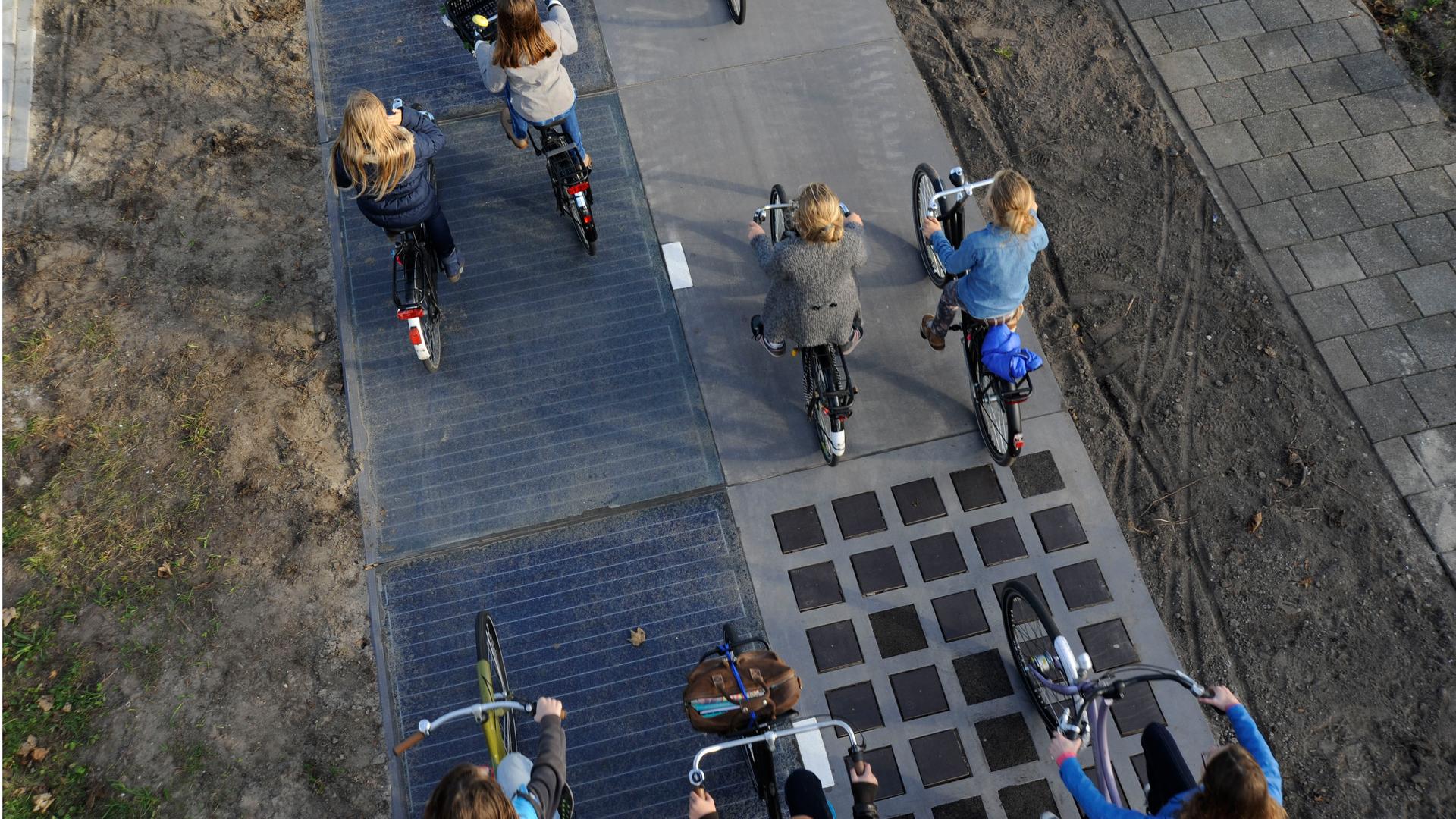This bike path is made entirely of solar panels
Cyclists ride over a stretch of a new bike made entirely of solar panels in The Netherlands.
If you could get up on the roof of our offices in Boston, you'd be standing amongst a bunch of solar panels. That's not so unusual.
But in The Netherlands, they're experimenting with putting solar panels in a much more unusual place: Bike paths.
A bike path made of solar panels opened today in a suburb outside of Amsterdam. Just 230 feet of it exist. Designers say it's enough to power three homes.
But is it worth the cost? Many in this cycling crazed culture say yes.
“It’s incredible. It’s the world’s first ever public, solar cycle path,” says the BBC’s Anna Holligan. “There are actually more bikes than people in this country. It’s famous for cycling. So it’s the right place to be testing this pioneering technology.”
Holligan says you can’t actually tell the difference between the solar path and a regular path on the first ride. It’s only when you get up close to the ground, which you don’t normally do when you ride. “It looks almost like those really posh wine glasses that you find in cocktail bars. The path is made of crystalline silicate solar cells. It’s then encased in concrete and covered with a translucent layer of glass. And it’s treated so you don’t slip off it. And when I was cycling on it, it felt perfectly comfortable and you really can’t tell the difference.”
The path itself is tilted at a very shallow angle to get better sunlight. Critics say it’s not practical and not as good as regular solar panels that move and tilt with the sun throughout the day. But given this part of the globe isn’t that well known for sunshine, is it really a good idea?
Holligan says she thought about that when she rode. The skies were cloudy and it was and rainy. But the developers certainly think it will provide enough energy to make it work.
The big stumbling block is the cost. “That’s something governments always look at before implementing these kinds of schemes,” she says. “This one in The Netherlands has been mostly funded by the local council and there is a real drive here to improve their environmental policy. It costs 3 million euros. So it’s expensive.”
The Netherlands is going for it. Holligan says even something this small could be big. The Netherlands rely a ton on energy from other countries. “It’s been a really big debate here in the country about how much gas they get from Russia and they want to become more self-sufficient. And it’s all about the scale of productivity. And if these things keep expanding, then they become more cost effective.”
Holligan is simply impressed something like this can happen. That a government would actually be forward thinking.
“I think, partly these things are designed to show what’s possible and the really practical questions cost and implementation … they come later.”
